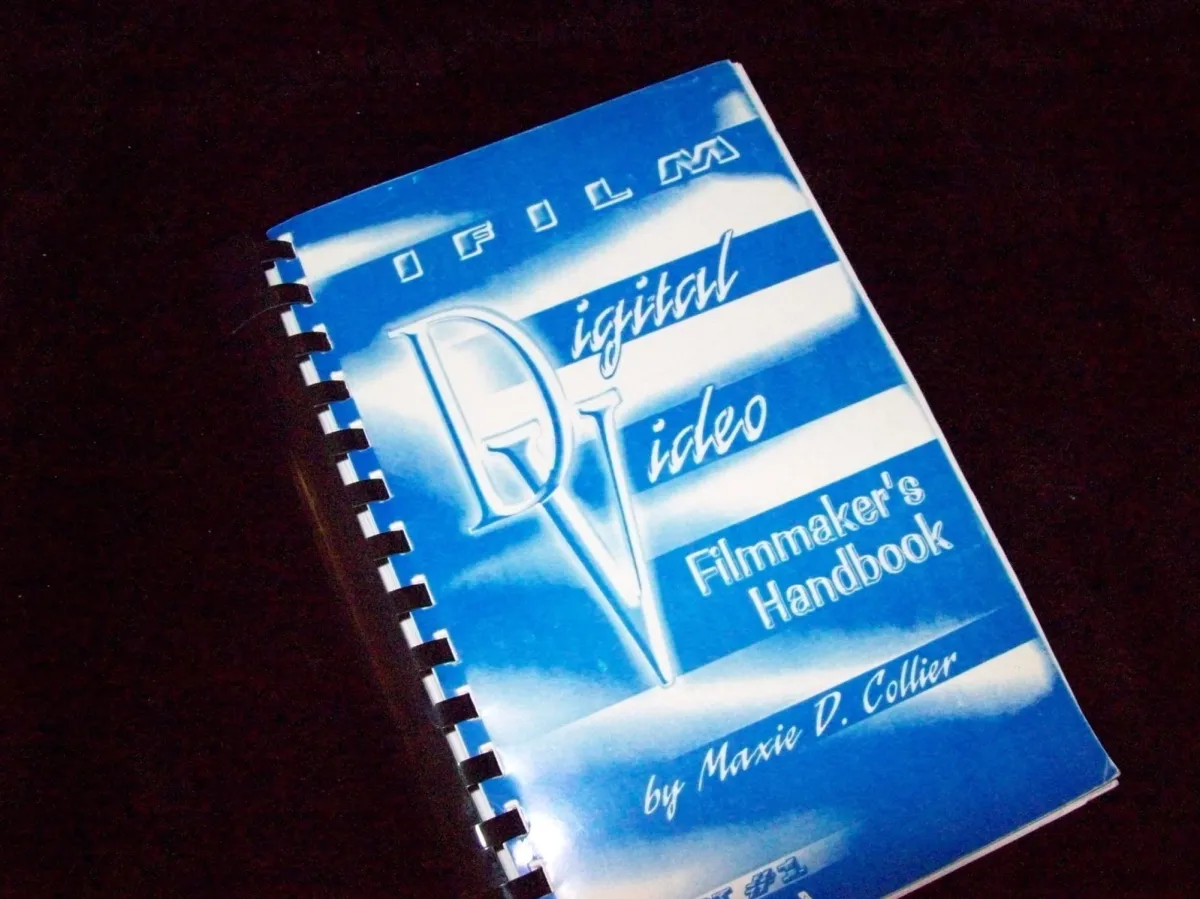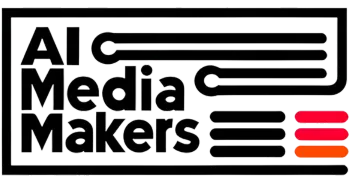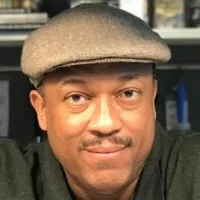
Dreams Of Digital Streams - A 25 Year Personal Recollection Of OTT TV
I recently heard a veteran broadcast media professional refer to OTT TV ("Over-The-Top" television) as "the shiny, new thing." I started to say "Nah, we've been transmitting video over the internet for a couple of decades." But I bit my tongue and nodded, knowing from experience that there was no point trying to challenge this person's perspective.

However, it did make me wonder, "How many legacy media executives - print, radio, and TV - have been so focused on squeezing the lasts bits of revenue from their existing business models that they have failed to see the opportunities that have been brewing in the OTT TV space for more than 20 years?"
It also got me flashing back to my own analog to digital journey over these many years, and the Summer of '99 in particular, a period that was the springboard for Internet powered consumer video content and the set-up for the dotcom bust 1.0 that would follow, just a couple of years later.
"The sole missin' link, what could MC's who listen think. It's Black Thought, open your eyes and don't blink. Yo, to rock this mic is like a basic instinct"
Yep, I can still hear that old school Roots track from "Things Fall Apart" blasting in my CD Walkman, while riding the BART train from Walnut Creek, CA to downtown San Francisco to begin working at iFILM Networks, the first major web streaming portal, pre-dating YouTube by 6 years.

I walked into the brand new office there on Sansome Street and was greeted warmly by the company founders Rodger Raderman and Luke McDonough. While there wasn't any furniture and only a few other employees, Rodger walked me through the offices, excitedly sharing the latest updates on his fast growing start-up.
Less than two months earlier, we had sat outside a hotel in Santa Monica and negotiated a licensing and co-publishing deal for my self published book "The Digital Video Filmmaker's Handbook." I'd published the original text in the Fall of 1998. Within a few months I had sold nearly a 1000 copies and grew an email newsletter with more than 5,000 subscribers. While I truly loved physical process of shooting and editing celluloid film, the book's success validated for me that digital production was coming and digital distribution wouldn't be far behind.
It was one of my newsletter readers and an another early iFilmer, Kevin Winterfield, who brought my book to Rodger's attention. A few months after our deal, a well funded iFilm would purchase Lone Eagle Publishing, with my book serving as an impetus for the initial conversation.

As an East Coast dude living and working in the Bay for the first time, it was a joyful respite from the Hollywood Shuffle I had been doing for a couple of years. After spending most of the 90s working as a TV stage manager and assistant director in the DC area and traveling back and forth to LA, I had produced a couple of feature films in the DMV, shot on real motion picture film stock, but edited using the earliest non-linear editing systems - EMC, Avid, and early versions of Adobe Premiere.
My PC computer and online experiences as a teen in the 80s would be the foundations that helped consitently place me at the forefront of desktop publishing, electronic music, digital filmmaking, and eventually digital distribution. However back in the 80s, computing tech was mostly in the hands of labs, early adopters, and OGs ("Original Geeks") like me.
As a hardcore hip-hop head and breakdancer, I learned to keep my digital habits to myself. I had absolutely no one to talk with about what I was learning, all self taught. And I was embarrassed trying to explain these concepts to others in my high school, that is until I heard this one verse from rapper T LA Rock on "It's Yours!" the very first recording artist and song released by future powerhouse Def Jam Records
Computer programmed with just one finger Made complete for the chosen singer
Once lyrics are finished, the picture is done The difference is this picture has no sun
But there's plenty of bright, kaleidoscope light No color supersedes cause the balance is right
These lyrics unified the b-boy and geek in me. From that point on, I never stopped evangelizing for artist to prepare for the forthcoming digital tsunamis. Unfortunately, for many I was still speaking binary and folks most often stared blankly. However, I was successful helping some progressive friends in the music business, like my homegirl Elise Perry, go digital in the early 90s, selling them music friendly Atari and Commodore computers and sequencers.
Then in 1992, I read a New York Times article that cleared the fog and helped me see exactly what was to come in the world of digital video and TV. At that time, they called it Video Dial Tone, the idea of transmitting video content over the forthcoming fiber pipelines.
The Federal Communications Commission has just authorized "video dial tone" -- transmission of television and other video services over phone lines. Dial-up movies could be commonplace by the early 00's.
New York Times - Aug. 1992
Having worked in live television for a couple of years, I immediately saw the opportunities offered by doing away with expensive satellites, broadcast TV equipment and regulations, and all of technical processes that required engineers and specialized skills.

However, at the time it was all still theoretical and out of reach for me and even my pro broadcast engineering friends. That is until 1993, when my brother Zaitrarrio Collier, while a student at Cornell University, introduced me to the Internet, he showed me Adam Curry's MTV.com website, and a video conferencing software packaged developed at Cornell called CuSeeMe. I finally had my hands on some video streaming technology, albeit black and white, super low resolution and frame rates, yet I was able to communicate with complete strangers from around the world and share video with each other. Oh yeah, it was on and popping then! At least until I received the phone bill for the hundreds of hours I was spending logged in during a time when we were billed for every minute online.
I knew I had to figure out how to monetize this technology. But there were literally ZERO indie or mainstream business models developed around this emerging video stream tech, except one - the porn industry.
I've never publicly shared this fact, but in 1995 I paid $3,000 to a company in San Diego to create a white labeled version of their adult video chat software, I called it Fantasy Live! I built a website called _________ to distribute the "app" for free. The content was comprised of erotic photos and stories submitted by users (way before I ever heard the term user generated content). The software users were billed a per minute charge to their credit card or for a 976/900 # (yeah remember those party lines, the earliest "social networking tech" but that's another post!)
I made the initial $3k back in less than 4 months. For the next 2 years I had a passive income of $1200-$1500/month with zero advertising and minimal admin expenses. Even though I saw that it was going to blow up and take off, I didn't renew the domain and shut it down in 1997.
I have no objections to healthy adult content. Like many teens of the 80s, I grew up watching Time Warner owned HBO and Cinemax after hours content (yeah Skinemax was a thing). In fact, at the time I had my adult site, BET was making a fortune from softcore content, Uncle Luke's Peepshow, on their Action Pay Per View channel. But I do have five sisters. I knew I didn't want to expose my family to that world nor did I have any desire to be the Black Larry Flynt.

However, I had built a thriving video streaming business and learned all of the tech. I combined those lessons with my TV and filmmaking experience. They became the basis for my DV Filmaker's Handbook, which I self published a year later, ultimately earning way more income and professional advancement.
In early 1999, I approached the UCLA Extension Program about hosting a full day digital filmmaking workshop. The program was held in the Spring and turned out to be tremendous success, with over a 150 people engaged and participating thru out the day. Josh Mellicker was one of my guest speakers. He would later go on to teach thousands of people video editing and production with his company DVCreators. Actor Don Cheadle was also in attendance. In fact, there are filmmakers I still communicate with today that I first met at that event.
The Summer of '99 was fast and furious, not unlike the start-up climates so widespread now. The company grew swiftly and I became a part of a cohort of digital media trailblazers and entrepreneurs. In addition to Rodger, Luke, and Kevin, I had great conversations and brainstorms with other iFilmers including CTO and pioneering VJ Greg DeCampo, co-founder Kevin Wendell, Allison Roth in Business Development and editor-in-chief Andrew Hindes.
As a bonus, I got to meet filmmaker Rob Nilsson, whose 1984 taxi cab feature Signal Seven, one of the first features shot on video and transferred to film, was also a major influence on my debut feature film BMORE HACKS. iFilm shared the behind the scenes as he produced a new film and hosted the first simultaneous theatrical and streamed feature film debut.
I was also introduced to Flash animation technology. An iFilm competitor, Atom Films, was deeply vested in the animation technology, as it performed much better over the limited bandwidth of the dial-up modems that still dominated most homes.
I shared these tech and animated examples with my friends Angela Northington and Nichelle Protho, who were critical parts of the Los Angeles start-up team at UrbanEntertainment.com. Their company would later become the first to receive a movie production deal based upon a Flash animated cartoon, with the feature Undercover Brother.
I loved the work we were doing at iFilm. However, among all of the business and tech talk, I was often the voice of the content creators, and from day one I was asking "How are the filmmakers going to be paid?' Just like I was trying to figure out how to monetize the tech years earlier. And most frequently the reply was "Exposure!" or the euphemism "Eyeballs!"
Yes, despite the millions raised for the technology, the content and content creators were relegated to minimal budget line items. On the other hand, we also saw companies throw millions into content and marketing with no clear strategies for recouping. These two trend would continue for the next decade.
I became increasingly uncomfortable as iFilm grew from a start-up into a multimillion dollar enterprise. I dreaded the long commutes, start-up work hours, time away from my own projects and most of all the growing clarity that our work was not sustainable. After a health scare, I left the company and moved back to LA.
I was reinvigorated by all that I had learned and seen at iFilm, in addition to watching other entrepreneurs like my brother Zay, Azhar Khan, and their friends from Cornell build their own San Francisco-based start-up, Cubus, as well as hometown Maryland CEO Clarence Wooten, who had built and sold his web start-up ImageCafe to Network Solutions for millions, less than a year after starting it.

Once I returned in Los Angeles, I immediately started filmming the first footage for my documentary Paper Chasers. I was inspired and intrigued by the Bay Area entrepreneurs and all of the business minded hip-hop folks that I had met over the years.
I still spent time at iFilm's Hollywood office, learning the traditional publishing game from Lone Eagle Publisher Jeff Black, as we prepared for the forthcoming re-release of my updated book, now called the iFilm Digital Video Filmmaker's Handbook. We'd eventually sells tens of thousands of copies of the book and it would become a text, the first digital filmmaking text, for countless film schools. But those publishing lessons and stories are also for another post.
iFilm was sold to Viacom in 2005 for $49 Million. By that time it had attracted investors like Axiom Ventures, Inc., Eastman Kodak, Liberty Digital, Sony Pictures Entertainment, Vulcan Inc., Yahoo! and Rainbow Media (Now AMC Networks), who were also my partners and investors in Paper Chasers.
That same year, I'd be approached and hired by a new wave of companies trying to build Internet video brands and companies. I remember sitting in the offices of one of them comparing our product to another company which was just a few months old called YouTube. I said to the founders "Man that looks wack, our product is going to be so much better than theirs."
Boy was I wrong about that! But overall my digital visions from the 90s have finally come to fruition. The shiny new thing has grown up to be a rapidly expanding ecosystem of SVOD ("subscription video on demand") and AVOD ("ad supported video on demand") channels, reinvigorating the TV ad industry as cordcutters get rid of cable and satellite TV in favor of channels like Netflix and Pluto TV, delivered via Roku TV, Amazon Fire TV, Apple TV and other connected TV devices and mobile apps.
And yes, with all of these new outlets requiring content, business minded filmmakers and producers are finally generating income AND eyeballs from their works being served directly to their target audiences and consumers. Often retaining more creative control and intellectual property ownership than ever.

Today, my company Super Livestreams focuses on helping companies, brands, and content creators launch their own OTT TV channels, video programs, e-learning content and merchandise.

We also continue to train mediamakers, currently offering My Documentary Accelerator https://mydocumentarycourse.com a 12 week training and coaching program for documentary and reality video producers. You can watch the full Paper Chasers Movie at https://paperchasers.tv
I'll be honest, I tried to avoid the nostalgia of this article. Despite the iFilm 20 year anniversary, I deferred writing these words for months. I have preferred instead to be immersed in the fast emerging contemporary tech of the current video boom. But it's been fun for a moment. I continue to be grateful for the many. many friends, opportunities and lessons along the way. Thank you for riding with me for this little throwback reflection of OTT TV days past!
REFERENCES
https://variety.com/1999/digital/news/ifilm-web-site-to-offer-filmmaker-s-eye-view-1117503346/
http://movies2.nytimes.com/1999/12/12/technology/122099outlook-film.html
https://genius.com/T-la-rock-and-jazzy-jay-its-yours-lyrics
https://www.nytimes.com/1992/08/31/opinion/the-video-dial-tone-strangled.html

